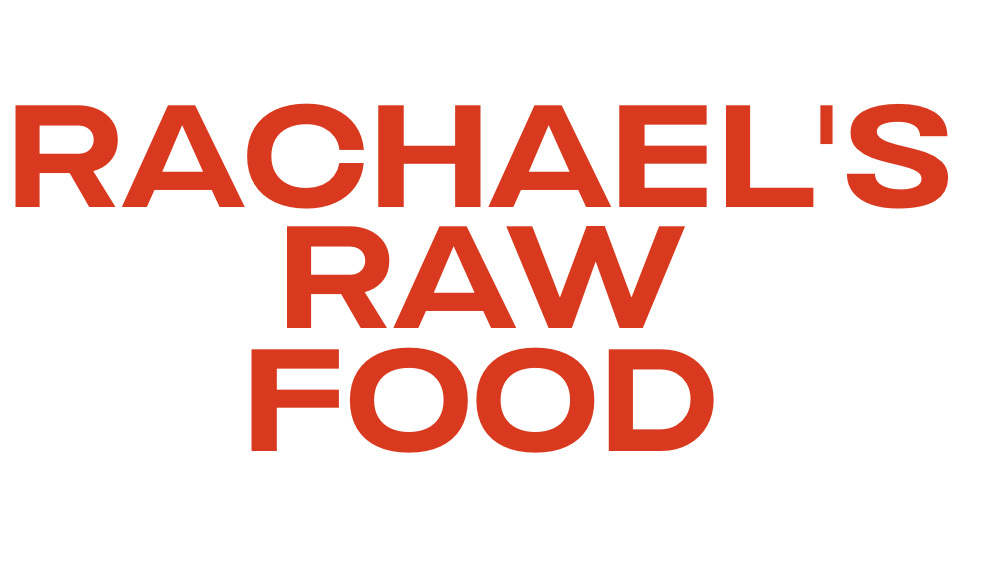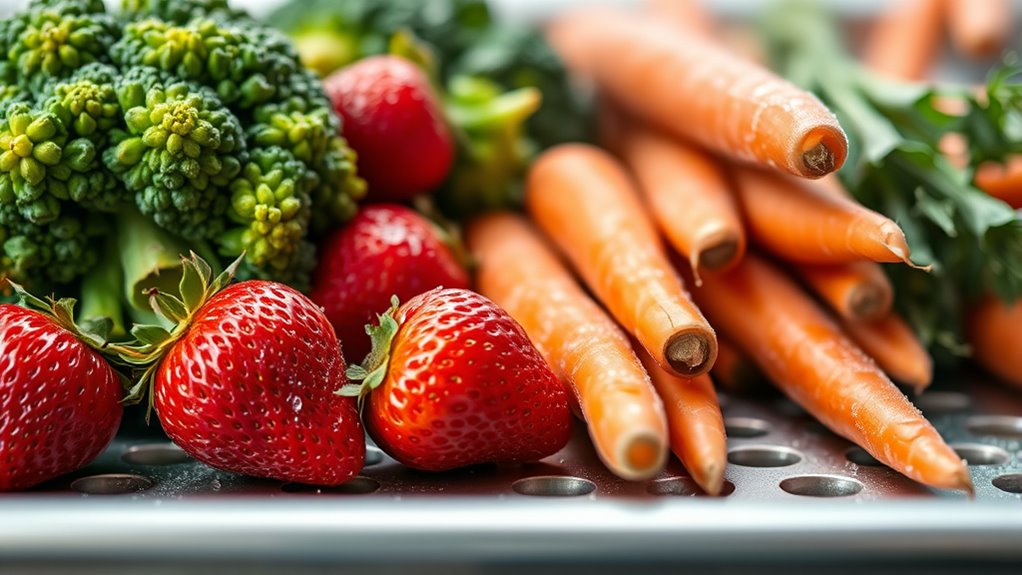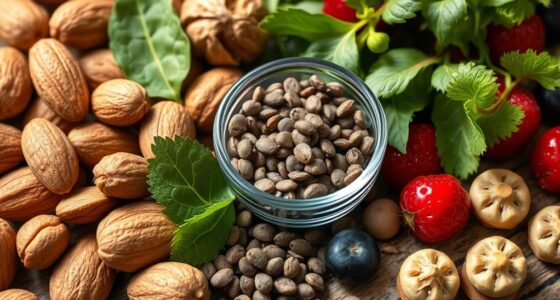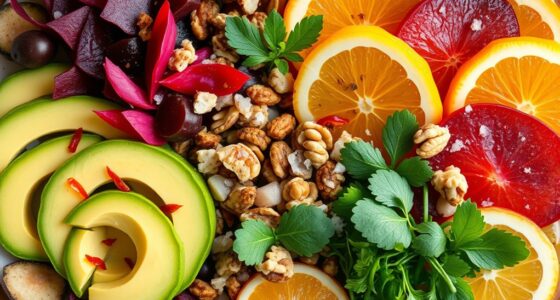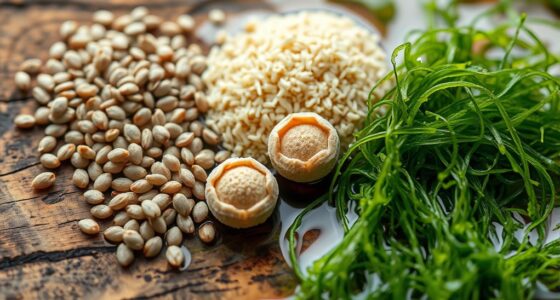To freeze raw produce without losing texture, start by blanching your vegetables briefly to deactivate enzymes that cause spoilage. Quickly cool them in ice water to stop the cooking process, then spread them out in a single layer on a tray to freeze rapidly. Once frozen, transfer them to airtight freezer bags or containers, removing as much air as possible. Keep the freezer at 0°F (-18°C) and monitor its temperature to make certain of quality. Keep exploring for more tips to preserve freshness.
Key Takeaways
- Blanch produce briefly before freezing to deactivate enzymes and preserve texture.
- Use rapid freezing methods like flash-freezing on shallow trays to minimize ice crystal damage.
- Pack produce in airtight, moisture-proof containers or vacuum-sealed bags to prevent freezer burn.
- Cool blanched produce quickly in ice water to halt cooking and maintain firmness.
- Keep freezer temperature consistently at 0°F (-18°C) to ensure optimal texture preservation.

Freezing raw produce is a practical way to preserve freshness and extend shelf life. However, to maintain the quality and texture of your fruits and vegetables, you need to understand the right techniques. One essential step is blanching, which involves briefly boiling or steaming produce before freezing. Blanching helps deactivate enzymes that cause spoilage and texture degradation, guaranteeing your produce stays vibrant and firm once frozen. When applying blanching techniques, timing is key. Over-blanching can lead to mushy texture and flavor loss, while under-blanching might not effectively halt enzyme activity. Usually, a quick dip in boiling water or a steam bath for a few minutes is enough, depending on the produce type. After blanching, it’s vital to cool the produce rapidly in ice water to halt the cooking process. This step preserves color, flavor, and nutritional value, setting a solid foundation for freezing. Additionally, using proper freezing techniques can significantly improve the preservation of texture and flavor during storage.
Once your produce is blanched and cooled, proper packaging methods become vital. You want to minimize air exposure to prevent freezer burn and moisture loss, which can compromise texture and taste. Use airtight containers or heavy-duty freezer bags, removing as much air as possible before sealing. For added protection, consider double-bagging or using vacuum-sealing equipment if you have it. Label your packages with the date to track how long they’ve been stored and guarantee you use older items first. Proper packaging methods not only preserve quality but also prevent freezer burn, which can turn your produce into a dehydrated, flavorless mess.
When freezing, avoid stacking heavy items directly on your produce to prevent crushing delicate textures. Spread out items in a single layer initially, then stack once fully frozen. This method helps maintain the integrity of the produce and prevents bruising. Additionally, maintaining a consistent freezer temperature of around 0°F (-18°C) is vital for perfect preservation. Rapid freezing is preferable because it forms smaller ice crystals that cause less damage to cell walls, helping your produce retain its original texture once thawed. If possible, use a flash-freezing technique for more delicate items, which involves freezing quickly on a shallow tray before transferring to storage containers. This way, you minimize the risk of texture loss and guarantee your frozen produce remains as close to fresh as possible when you’re ready to use it.
Frequently Asked Questions
How Long Can I Store Frozen Raw Produce Safely?
You can store frozen raw produce safely for 8 to 12 months, depending on the type. To maximize freshness, follow proper storage tips like using airtight containers or freezer bags and removing excess air. Label your packages with dates to keep track of freezing durations. Keep your freezer at 0°F (-18°C), and avoid frequent temperature fluctuations, which can compromise quality and safety over time.
Does Freezing Affect the Nutritional Value of Raw Produce?
Freezing raw produce generally preserves its nutritional stability and vitamin retention well. You might lose some vitamins, especially vitamin C and B vitamins, but overall, freezing helps maintain most nutrients compared to fresh produce stored at room temperature. To maximize nutritional value, freeze produce quickly after harvesting and use proper packaging. This way, you’ll enjoy nutritious, flavorful produce even after freezing, with minimal nutrient loss.
Should I Blanch Produce Before Freezing?
Blanching is absolutely essential before freezing produce; skipping it can lead to ruined texture and flavor. Blanching benefits include stopping enzyme actions, preserving nutrients, and maintaining produce texture, making your frozen fruits and veggies nearly as fresh as the day you picked them. It’s like giving your produce a quick spa treatment before storing—ensuring it stays vibrant, crisp, and delicious long-term. Don’t skip this vital step for the best results!
What Is the Best Packaging Method to Prevent Freezer Burn?
To prevent freezer burn, you should use airtight containers or vacuum sealing. These methods remove air and create a tight barrier around your produce, which helps maintain freshness and texture. Airtight containers are simple and reusable, while vacuum sealing offers the most protection by eliminating air entirely. Both options keep moisture in and prevent ice crystals from forming, ensuring your produce stays fresh and flavorful for longer periods.
Can I Freeze Pre-Cut Raw Produce Without Texture Loss?
Absolutely, you can freeze pre-cut raw produce without losing its texture or flavor—it’s like preserving a tiny piece of summer! To do this, blanch the produce briefly, then dry it thoroughly before sealing it in airtight packaging. This process guarantees ideal texture preservation and flavor retention. Use freezer-safe containers or bags, remove excess air, and label everything clearly. Your pre-cut produce will stay fresh and delicious for months!
Conclusion
Think of freezing raw produce like capturing a fleeting rainbow in a jar. You hold onto its vibrant colors and freshness, locking in nature’s masterpiece before it fades. With proper techniques, you become the artist preserving the garden’s beauty, ensuring each bite tastes as lively as a sunlit morning. So, embrace the process, and your frozen fruits and veggies will stay as vivid and delightful as a rainbow waiting patiently in your freezer.
